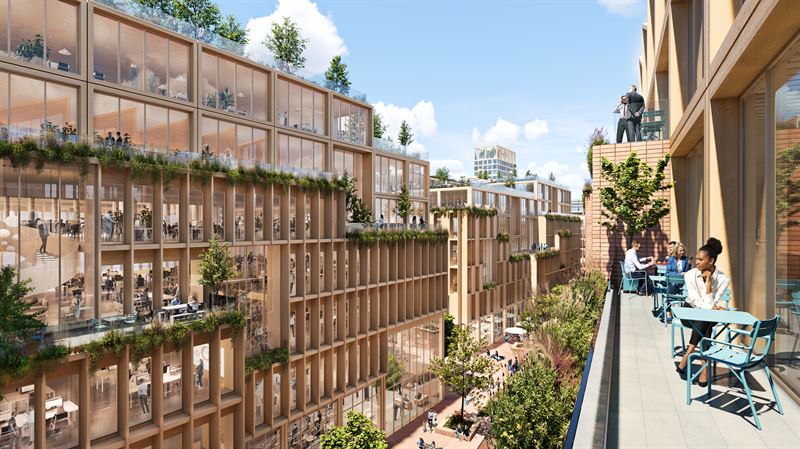Sweden, famous for its iconic meatballs and Ikea furniture, is poised to become the site of the world’s largest wooden city, Stockholm Wood City.
Wood, as a truly renewable resource, has the remarkable ability to regenerate repeatedly. Currently, wood is gaining prominence as the favoured material in design. With this ambitious venture, Sweden is aiming to showcase the grandeur of wood as well as its potential in sustainable construction.
Atrium Ljungberg’s Vision for Stockholm Wood City
Urban development company Atrium Ljungberg has revealed its plans to build the world’s largest wooden city in Stockholm. The construction is set to commence in 2025, with the first buildings anticipated to be completed by 2027.
Sustainable Urban Planning at Its Core
The largest wood-building project in the world is currently underway, spanning an impressive 250,000 square meters. It’s important because built structures contribute a substantial 40% to the world’s CO2 emissions.
Stockholm Wood City, in southern Stockholm, is poised to be a pivotal moment in sustainable architecture as well as urban planning. Within this innovative neighborhood, 2,000 additional houses and 7,000 business spaces will be integrated. By merging workplaces, residences, neighborhoods, dining establishments, and retail areas, it aspires to create a lively and dynamic urban environment.
Wood City’s Environmental Advantages and Features
The project’s focus is on sustainable urban planning. It utilizes timber to address environmental challenges within Swedish cities. Timber construction stands out for its lower carbon emissions compared to steel and concrete and its reduced pollutant emissions.
Additionally, timber’s fireproof nature is essential, especially considering the rising risk of forest fires due to climate change. Wood City prioritizes self-produced energy, green spaces, sustainability, superior insulation, CO2 absorption, and lower emissions, making it a crucial model of sustainability for the real estate market.







